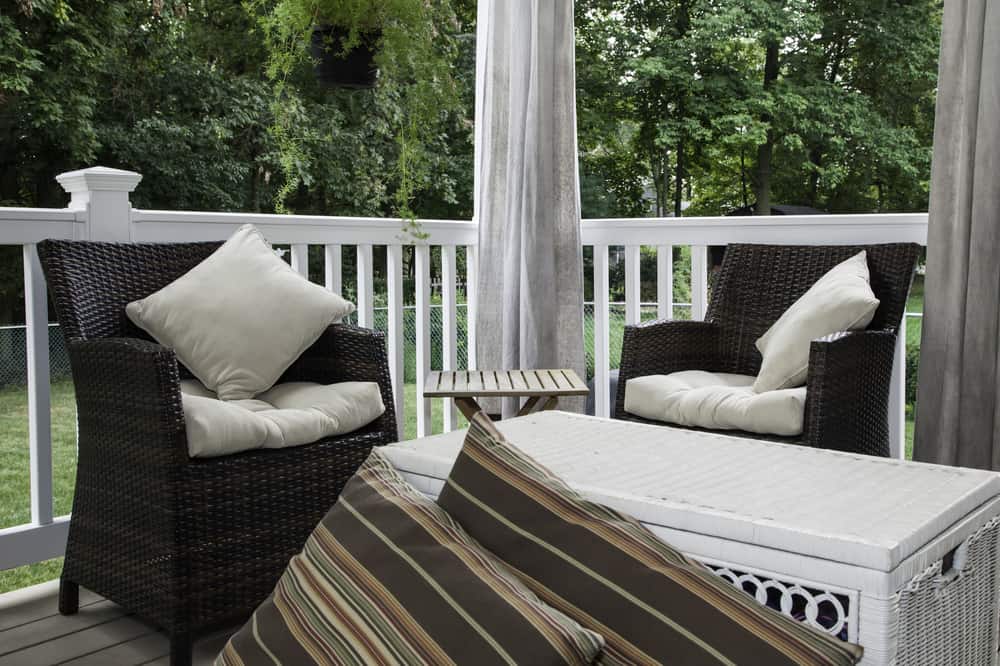How to Keep Your Garden Furniture Clean
Garden furniture is a fantastic addition to any outdoor space, offering comfort and style for relaxation and socialising. However, constant exposure to the elements can lead to dirt, wear, and tear. To extend the life of your outdoor furniture, it’s essential to maintain a regular cleaning routine and take protective measures, so here’s a comprehensive guide to keeping your garden furniture clean and well-maintained.
1. Regular Clean Based on Material Type
The main way you will be able to keep your furniture clean is by doing it regularly. However, different types of garden furniture require specific cleaning methods, depending on the material.
· Wooden Furniture
Wooden outdoor furniture is beautiful but requires regular upkeep to avoid rot, warping, or fading due to moisture and UV rays. Use a soft cloth to dust off your furniture every week. Then, with a mix of mild soap and water, gently scrub the surface with a soft brush or sponge. Rinse with clean water and let it dry in the sun.
· Metal Furniture
Metal furniture, such as aluminium, wrought iron, or steel, can withstand outdoor conditions but is still prone to rust and staining. Use a soft cloth or sponge with soapy water to wipe off dust and debris. For wrought iron, inspect for rust and use a wire brush to remove it.
· Plastic and Resin Furniture
Plastic and resin furniture are among the easiest to clean but may lose colour over time. Simply wipe down with soapy water and a soft cloth or brush to remove dirt. For stubborn grime, sprinkle baking soda on a damp cloth and gently scrub.

· Cushions and Fabrics
Outdoor cushions, pillows, and fabric covers tend to attract dust, dirt, and mildew. However, most outdoor fabric covers can be machine-washed. If not, spot-clean them with a mixture of water and mild detergent. Always allow fabrics to air-dry thoroughly to prevent mildew.
2. Introduce Preventative Measures
In addition to cleaning, taking preventive steps can make a huge difference in maintaining your garden furniture’s appearance and durability. There are several things you can do:
· Invest in Furniture Covers
Using weatherproof furniture covers is a practical way to protect your outdoor furniture when it’s not in use. Covers shield your pieces from dust, rain, and harsh sunlight, reducing the need for constant cleaning.
· Move Furniture Indoors During Harsh Weather
If you have storage space, consider bringing your garden furniture indoors during the winter or rainy seasons. This is particularly useful for lightweight items like plastic or resin furniture that may not withstand heavy storms or snow.
· Install a Veranda to Cover Your Garden Furniture
If you don’t have the space to bring your furniture inside in the colder months or want to ensure it is protected all year round hassle-free, one of the most effective ways to protect your garden furniture from the elements is to install a veranda. A veranda or garden room provides year-round coverage from rain, snow, and excessive sunlight, preventing weather-related damage like rust, fading, or warping, and enhances the aesthetic appeal of your outdoor space. Since your furniture will be undercover, it accumulates less dirt, debris, and bird droppings, reducing the frequency and intensity of cleaning required. Plus, you get the added benefit of a space in your garden to enjoy no matter the weather.
· Elevate Furniture Off the Ground
Placing furniture on a patio, decking, or gravel instead of directly on the grass or dirt can prevent moisture from seeping into the legs, reducing the risk of rot or rust. Elevation also helps air circulation around the furniture.
3. Treat mould and mildew immediately
Mould and mildew are common problems for garden furniture, especially in humid or rainy climates. Left untreated, these fungi can cause unsightly stains, unpleasant odors, and even damage the materials of your furniture, especially fabrics and wood. It’s essential to address mould and mildew as soon as they appear to prevent their spread and preserve the integrity of your outdoor pieces. As an example of how to treat mould and mildew, here’s what you will need to do for wood furniture. First, you’ll need to dry the wood completely, as this makes the next step easier. Mix one part white vinegar with three parts water in a spray bottle. Spray the affected areas and use a soft-bristled brush to scrub gently in the direction of the wood grain. Vinegar helps kill the mould spores without damaging the wood. Then, you’ll want to rinse the area with clean water and let the furniture dry in direct sunlight. Sunlight helps kill remaining spores and dries out the wood naturally.






